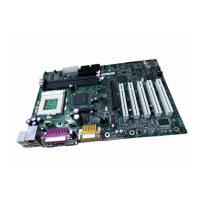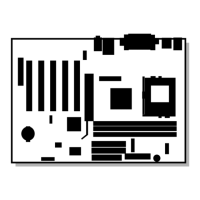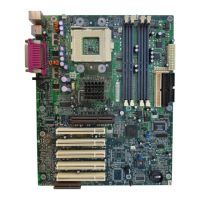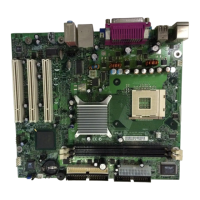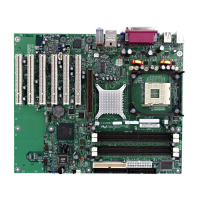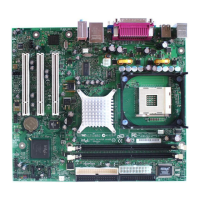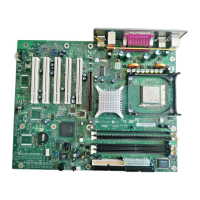Product Description
49
The BIOS enables APM by default; but the operating system must support an APM driver for the
power management features to work. For example, Windows 98 supports the power management
features upon detecting that APM is enabled in the BIOS.
For information about Refer to
Enabling or disabling power management in the BIOS Setup program Section 4.6, page 127
The D815EEA2 and D815EPEA2 boards’ compliance level with APM Table 4, page 20
1.15.1.2 ACPI
ACPI gives the operating system direct control over the power management and Plug and Play
functions of a computer. The use of ACPI with the D815EEA2 or D815EPEA2 board requires an
operating system that provides full ACPI support. ACPI features include:
• Plug and Play (including bus and device enumeration) and APM support normally contained in
the BIOS
• Power management control of individual devices, add-in boards (some add-in boards may
require an ACPI-aware driver), video displays, and hard disk drives
• Methods for achieving less than 15-watt system operation in the power-on/standby sleeping
state
• A soft-off feature that enables the operating system to power-off the computer
• Support for multiple wake up events (see Table 11 on page 51)
• Support for a front panel power and sleep mode switch. Table 9 lists the system states based on
how long the power switch is pressed, depending on how ACPI is configured with an
ACPI-aware operating system.
Table 9. Effects of Pressing the Power Switch
If the system is in this state…
…and the power switch is
pressed for
…the system enters this state
Off
(ACPI G2/G5 – soft-off)
Less than seven seconds Power-on
(ACPI G0 – working state)
On
(ACPI G0 – working state)
Less than seven seconds Soft-off/Standby
(ACPI G1 – sleeping state)
On
(ACPI G0 – working state)
More than seven seconds Fail safe power-off
(ACPI G2/G5 – soft-off)
Sleep
(ACPI G1 – sleeping state)
Less than seven seconds Wake up
(ACPI G0 – working state)
Sleep
(ACPI G1 – sleeping state)
More than seven seconds Power-off
(ACPI G2/G5 – soft-off)
For information about Refer to
The D815EEA2 and D815EPEA2 boards’ compliance level with ACPI Table 4, page 20
